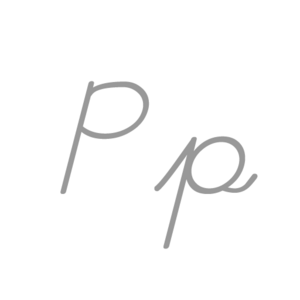P facts for kids
For technical reasons, :P redirects here. For the emoticon, see emoticons.
The letter P is the sixteenth letter in the English alphabet. It is a consonant that makes a "puh" sound, like in "pizza" or "pencil." You see and use the letter P every day when you read and write!
Where P Comes From
The letter P has a long and interesting history, going back thousands of years. It started as a picture in ancient times and slowly changed its shape to the P we know today.
The first version of P looked like a shepherd's crook or a stick. It was used by the Phoenicians, an ancient people who lived near the Mediterranean Sea. They called their letter "Pe," which meant "mouth."
Later, the ancient Greeks borrowed this letter and changed its name to "Pi." They also turned it around, so it faced the other way. The Romans then took the Greek "Pi" and made it into the letter P we use in the English alphabet.
| Phoenician P |
Archaic Greek Pi |
Greek Pi |
Cyrillic Pe |
Etruscan P |
Latin P |
|---|---|---|---|---|---|
P in Other Ways
The letter P is also used in other important ways:
- In mathematics, the Greek letter Pi (mathematical constant) (π) is a very important number used to calculate things about circles.
- In music, "p" can stand for piano, which means to play softly.
Images for kids
-
Late Renaissance or early Baroque design of a P, from 1627
See also
 In Spanish: P para niños
In Spanish: P para niños



